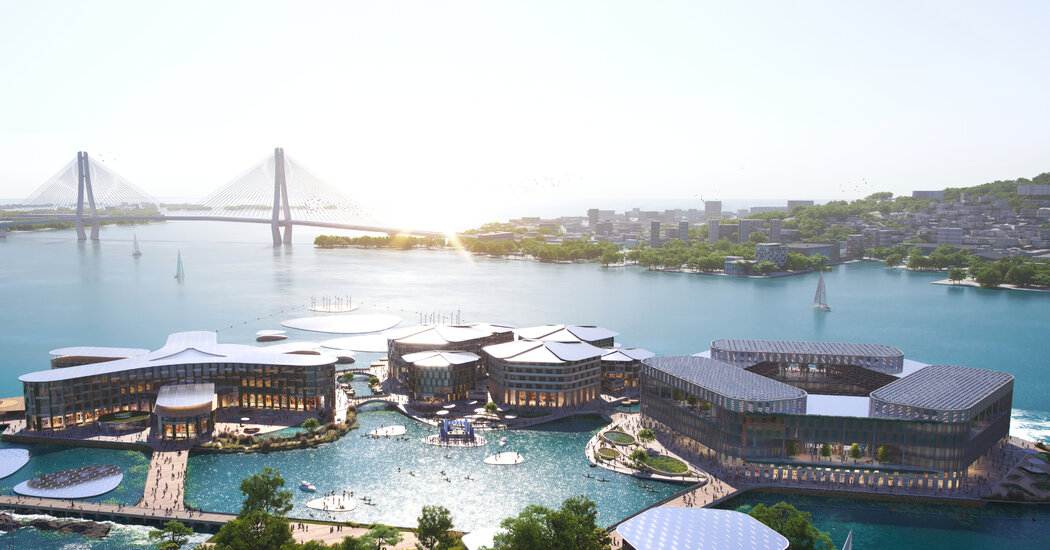
This article is part of our Design special section about water as a source of creativity.
Worldwide, rising sea levels and increasing urbanization represent a formula for disaster, with more and more people seeking to live on land that will, at some point, be swallowed up by the sea. But a futuristic-sounding solution — the construction of full cities on top of the water — is poised to become a reality.
One project in particular, off Busan, South Korea, is roping in a combination of high and low technology to create a large-scale, on-water town, which will be able to house more than 10,000 people.
Strictly defined, floating communities already exist in the Netherlands, Thailand and elsewhere in Southeast Asia. But these are typically clusters of houseboats moored close to one another. What sets the new concepts apart is a matter of scale. Rather than comprising an agglomeration of smaller vessels, each of these cities is designed to be built on enormous concrete platforms suspended on the water.
How does such a large form float?
“The physics is very easy,” said Koen Olthuis, the founder of the Dutch architectural firm Waterstudio, who designed a floating development in the Maldives that has received a great deal of attention.
“A block of concrete will sink,” Mr. Olthuis added, speaking on the phone from the Netherlands. “But if you shape it into a box, then it floats. It’s Archimedes. The amount of volume you push away is equal to the weight of the displaced water.” Think of aircraft carriers.
The floating city in development off Busan is coming together through the collaborative efforts of the United Nations Human Settlements Program, known as UN-Habitat; the architecture firm BIG (Bjarke Ingels Group); and the technology company Oceanix. Founded in 2018 by Itai Madamombe and Marc Collins Chen, Oceanix, which is based in New York City, designs and builds floating infrastructure for people to live and work sustainably on the ocean. (Some 90 percent of cities are coastal and hence can be vulnerable to sea level rise, according to UN-Habitat.)






